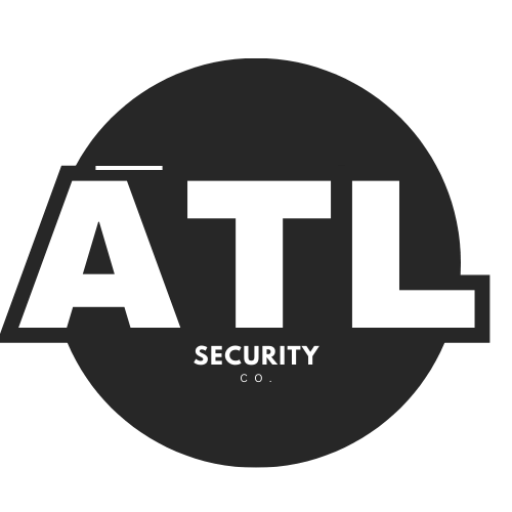When faced with a potential security threat, the first step is to assess the situation carefully. This means taking a moment to observe your surroundings and identify any immediate dangers. Look for signs of forced entry, unusual noises, or anything that seems out of place.
Your instincts can be a valuable tool in this process. If something feels off, it’s essential to trust that feeling and proceed with caution. In addition to visual cues, consider the context of the situation.
Are you alone, or are there others nearby? Is it daytime or nighttime? The time of day can significantly impact your response.
During the day, there may be more people around who can help, while at night, you might feel more vulnerable. Understanding the environment can help you make informed decisions about your next steps.
Key Takeaways
- Assess the situation: Quickly evaluate the nature and severity of the incident.
- Contact emergency services: Call 911 or the appropriate emergency services to report the incident and request assistance.
- Secure the premises: Take steps to ensure the safety and security of yourself and others in the building.
- Communicate with others in the building: Provide clear and concise instructions to occupants and employees to ensure their safety.
- Document the incident: Take notes and photographs of any damage or evidence related to the incident for future reference.
Contact emergency services
Once you have assessed the situation and determined that there is a potential threat, the next step is to contact emergency services. This could mean calling the police, fire department, or medical assistance, depending on the nature of the incident. When making the call, be clear and concise about what you are experiencing.
Provide your location and any relevant details that can help responders understand the urgency of the situation. While waiting for help to arrive, it’s crucial to remain calm. Panic can cloud your judgment and make it harder to think clearly.
If you are in a safe location, stay there until help arrives. If you are in immediate danger, find a secure place to hide if possible. Keeping communication open with emergency services can also be beneficial; they may provide instructions on what to do next.
Secure the premises
After contacting emergency services, focus on securing the premises. This involves ensuring that all doors and windows are locked and that any potential entry points are closed off. If you have a security system, activate it if you haven’t already done so.
A well-secured environment can deter further threats and provide peace of mind while waiting for help. In addition to locking doors and windows, consider moving any valuables out of sight. This can reduce the risk of theft if someone were to gain access to your space.
If you have a safe or a secure area where important items are stored, make sure those are locked as well. Taking these precautions can help protect your belongings and create a safer atmosphere until the situation is resolved.
Communicate with others in the building
If you are in a building with other people, it’s essential to communicate with them about the situation. Inform them of what you have observed and any actions you have taken, such as contacting emergency services. Clear communication can help everyone stay informed and make better decisions about their safety.
Encourage others to remain calm and follow safety protocols. If there is a designated meeting point or safe area within the building, guide everyone there. It’s important to work together as a team during emergencies; this can foster a sense of security and ensure that everyone is accounted for.
Sharing information can also help prevent panic and confusion among those present.
Document the incident
Once the immediate threat has been addressed, take time to document the incident thoroughly. Write down everything you remember about what happened, including times, locations, and any individuals involved. This documentation can be crucial for law enforcement investigations or insurance claims later on.
The more detailed your account, the better it will serve as a record of events. In addition to written notes, consider taking photographs of any damage or suspicious activity. Visual evidence can support your claims and provide clarity about what occurred.
Keep all documentation organized and accessible; this will make it easier to share with authorities or your security provider when needed.
Contact your security system provider
After documenting the incident, reach out to your security system provider. Inform them about what happened and discuss any potential vulnerabilities in your current setup. They may offer insights into how to enhance your security measures based on the incident you experienced.
This conversation can lead to valuable recommendations tailored to your specific needs. Your security provider may also conduct an assessment of your system to ensure everything is functioning correctly. They can check for any weaknesses that could be exploited in the future and suggest upgrades or additional features that could enhance your safety.
Taking proactive steps after an incident can help prevent similar situations from occurring again.
Review and update your security system
Following an incident, it’s wise to review and update your security system regularly. Take stock of what worked well and what didn’t during the event. Are there areas where your system fell short?
Perhaps certain cameras were not positioned effectively, or alarms did not trigger as expected. Identifying these gaps is crucial for improving your overall security.
This could include motion sensors, better lighting around entry points, or even smart home technology that allows you to monitor your property remotely. Regularly updating your security measures ensures that you stay one step ahead of potential threats and reinforces your commitment to safety.
Consider alternative security measures
In addition to reviewing your existing security system, think about alternative measures that could enhance your safety further. Community watch programs can be an excellent way to involve neighbors in keeping an eye on each other’s properties. Building relationships with those around you fosters a sense of community and shared responsibility for safety.
Another option is to explore personal safety devices such as pepper spray or personal alarms. These tools can provide an added layer of protection when you’re out and about. Additionally, consider taking self-defense classes; knowing how to protect yourself can boost your confidence and preparedness in various situations.
By following these steps—assessing the situation, contacting emergency services, securing premises, communicating with others, documenting incidents, contacting your security provider, reviewing systems, and considering alternative measures—you can enhance your safety and preparedness for future incidents. Remember that being proactive is key; taking steps now can make all the difference in ensuring your security later on.
FAQs
What are the common reasons for security system failure during an emergency?
Common reasons for security system failure during an emergency include power outages, system malfunctions, equipment damage, and communication failures.
What should I do if my security system fails during an emergency?
If your security system fails during an emergency, you should immediately contact emergency services and inform them of the situation. You should also have a backup plan in place, such as a secondary means of communication or alternative security measures.
How can I prevent security system failure during an emergency?
To prevent security system failure during an emergency, it is important to regularly maintain and test your security system. This includes checking the power source, ensuring all equipment is functioning properly, and testing communication channels.
What are some alternative security measures to consider if my security system fails during an emergency?
Some alternative security measures to consider if your security system fails during an emergency include installing backup power sources, such as generators or uninterruptible power supplies, implementing physical security measures, such as locks and barriers, and utilizing neighborhood watch programs or security patrols.
How can I ensure that emergency services are aware of my situation if my security system fails?
To ensure that emergency services are aware of your situation if your security system fails, it is important to have alternative means of communication, such as a backup phone line, a mobile phone, or a personal emergency response system. It is also important to have a plan in place to notify neighbors or nearby individuals of the emergency.








